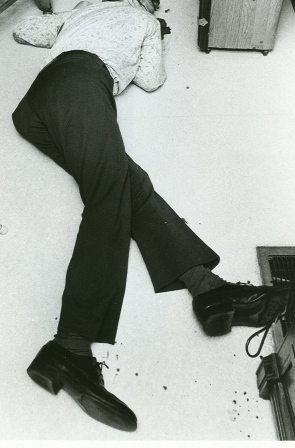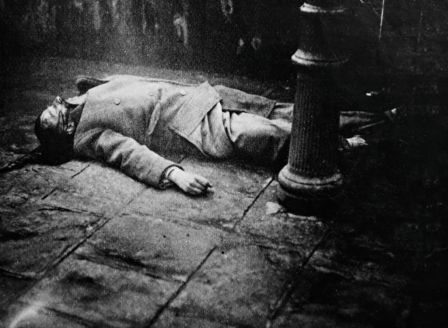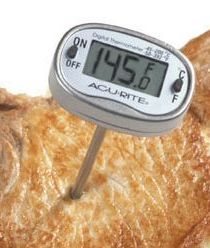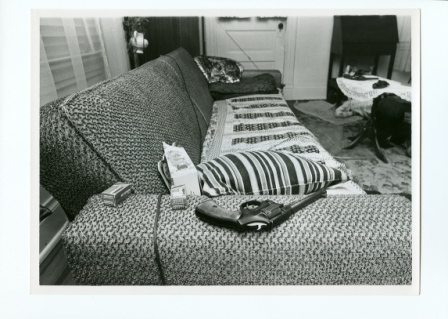There’s nothing in this world like entering an abandoned house in mid July to begin working a murder case, a scene where the pungent and putrid scent of rotting human flesh and organs fill your nostrils and lungs and adheres tightly to your clothing, hair, and skin like an invisible, gag-inducing, impossible-to-remove film.
If the stifling heat, humidity, and gut-wrenching stench of decomposing human don’t get to you, well, the flies, maggots, and other creepy critters that crawl in and out of the vicim’s mouth, ears, nose, open wounds and other body openings certainly will. But, it’s a job that falls into the laps of homicide cops—it’s what they do—and it’s a job that requires a special skill set. Not to mention a stomach made of cast iron and steel plating.
So let’s open the door to the house at the end of your street—the old Victorian that’s been empty for two years and is now surrounded by waist-high weeds. The once beautifully manicured lawn is now a graveyard for litter and other garbage left behind by transients and the kids who toss their empty fast food wrappers and plastic soda bottles over the rusted chain-link fence. The window panes are broken and many of the shingles have fallen off.
For months now neighbors have seen a homeless man going and coming, but suddenly realized that he hadn’t been around in the past two weeks, and there’s that strong odor. Like something is … dead.
So they call the police and before long the neighborhood is overrun by patrol cars and crime scene tape.
Inside the murder house, detectives are doing what they do best. They’re checking all the boxes on their mental checklist. And now their focus is on the victim.
 The Effects of Death on the Human Body
The Effects of Death on the Human Body
Prior to the removal of a body from the crime scene, homicide investigators should note (and photograph) the presence of each of the following in his/her report:
1) Livor/Lividity (color, location, blanchability, Tardieu spots, other coloring). Are these consistent or inconsistent with the current positioning of the body.
Remember, lividity is the pooling of blood/purplish staining of tissue at the lowest portions of a dead body, caused by gravity. Livor continues to form for up to 8 – 12 hours after death. This process can be slowed to as much as 36 hours in a cool environment, including a morgue cooler.
To test for blanchability, a death investigator uses a finger(s) to push against the flesh. The pressure forces blood out of the capillaries in that area, causing the flesh to present as much lighter in color. If the pressure does indeed cause a change in skin color, the flesh is blanchable. This tells the investigator the body is still within the lividity period, meaning the victim died sometime within the past 12 hours, or up to 36 hours in cool surroundings.
You can try this on your own skin. Use a finger to apply pressure to the back of your hand. Release the pressure after a second or two and you’ll see the change in skin color. Obviously you’ll use the finger of one hand to press against the skin on the back of your other hand. By the way, if you needed that instruction then the warning to remove Pop Tarts from their wrapper before heating are probably very important to you. And, if there was no change in your skin color, well, I hope your life insurance policy is up to date.
Tardieu spots are dark, circular areas—capillary ruptures.
2) Rigor
Muscles contain bundles of long, narrow cells. While we’re seated at our computers reading blogs and watching goofy videos, our muscles are, for the most part, at rest.
While resting, our muscles pump out calcium ions which build up electrical potential (energy). Then, when we’re ready to make that run to the mailbox to retrieve the latest royalty check, a nerve impulse causes those ions to hook up with actin and myosin filaments and the muscles contract (become tighter). They remain in that state until adenosine triphosphate (ATP) binds to the myosin, and before you know it the muscles once again relax.
 Got it now? No, well, don’t worry. All we need to know is that ATP has an obsession with oxygen. It absolutely has to have it to survive (you know, like Justin Bieber needs bodyguards to protect his scrawny, arrogant self from being slapped into a different universe).
Got it now? No, well, don’t worry. All we need to know is that ATP has an obsession with oxygen. It absolutely has to have it to survive (you know, like Justin Bieber needs bodyguards to protect his scrawny, arrogant self from being slapped into a different universe).
Actually, the body needs oxygen to produce ATP. Therefore, when a person stops breathing (no oxygen) the body ceases to make adenosine triphosphate. Without ATP our muscles can no longer relax. And when the muscles can’t relax, what happens? Yes, the body stiffens. And that, my writer friends, is called Rigor.
3) Degree of decomposition (putrefaction, adipocere, mummification, skeletonization, etc.). Everything affects decomposition, from air temperature to insects to shellfish and turtles (body in water). Even soil types and clothing can affect the rate of decomposition. Interestingly, newborns who have not yet been fed, decompose slowly since the body is basically sterile. However, an injury or being fed will cause a newborn’s body to decompose more rapidly.
a) Putrefaction – the final stage of decomposition. Presents as discoloration of tissue, disfiguration, liquefaction of tissue, bloating due to gases forming in the tissue and organs.
The general order of putrefactive changes are as follows:
First to go are the larynx and trachea, followed by …
– stomach, spleen, and intestines
– lungs and liver
– brain
– heart
– bladder, uterus, kidneys
– skin, tendons, and muscle
– bone
*The prostate resists putrefaction for a long time.
b) Adipocere – a waxy, soap-like substance that’s sometimes formed during decomposition. Normally caused by moist or damp conditions surrounding the decomposing body.
D. Insect and animal activity. Obviously, insects and animals can and do consume body parts. Animals may also scatter human remains, sometimes making the murder scene a bit more difficult to understand at first look.
E. Scene temperature. Note the temperature at the location of the body, and the method used to obtain it.
F. Description of body temperature. Is it warm to the touch? Is the flesh cold, or frozen?
It is extremely important to preserve the security of the body. Remember, the body is most likely THE most important piece of evidence in a murder case. Investigators should oversee the labeling, packaging, and the removal of the remains by the M.E’s personnel, or EMS, etc. An  identification tag should be attached to the body to prevent any mix ups later, at the morgue (yes, this has happened, and on more than one occasion).
identification tag should be attached to the body to prevent any mix ups later, at the morgue (yes, this has happened, and on more than one occasion).
Finally … No, detectives do NOT use thermometers of any type, including rectal thermometers, to check the temperature of a dead body. It is not in their job description to do so. Yes, I once read the rectal thermometer thing in a book. So, no, no, and NO!
By the way, the image to the left is of a grilled pork chop. Had your stomach turning for a moment, huh?
Happy New Year’s Eve!
Remember, Writers’ Police Academy Online has another exciting live and interactive seminar coming up on January 23rd. Details TBA in a couple of days!



